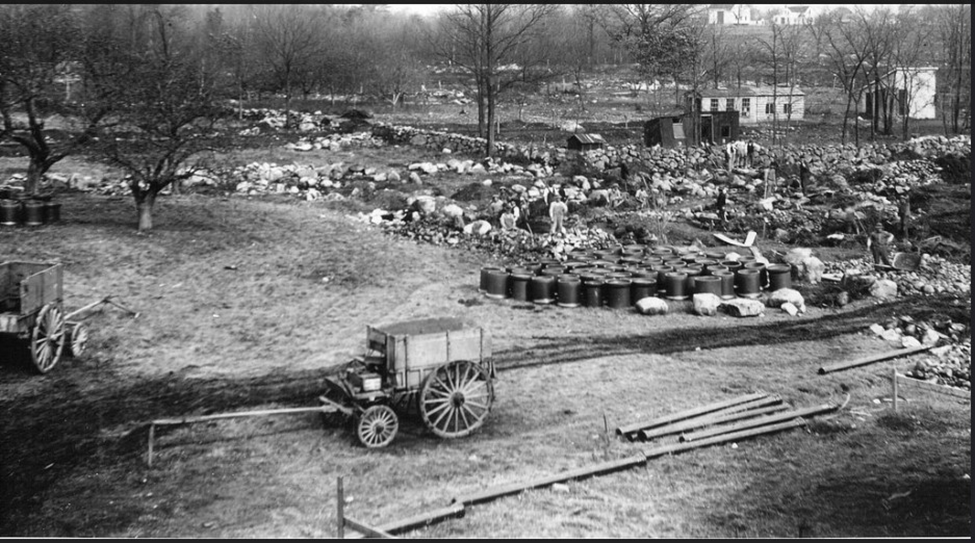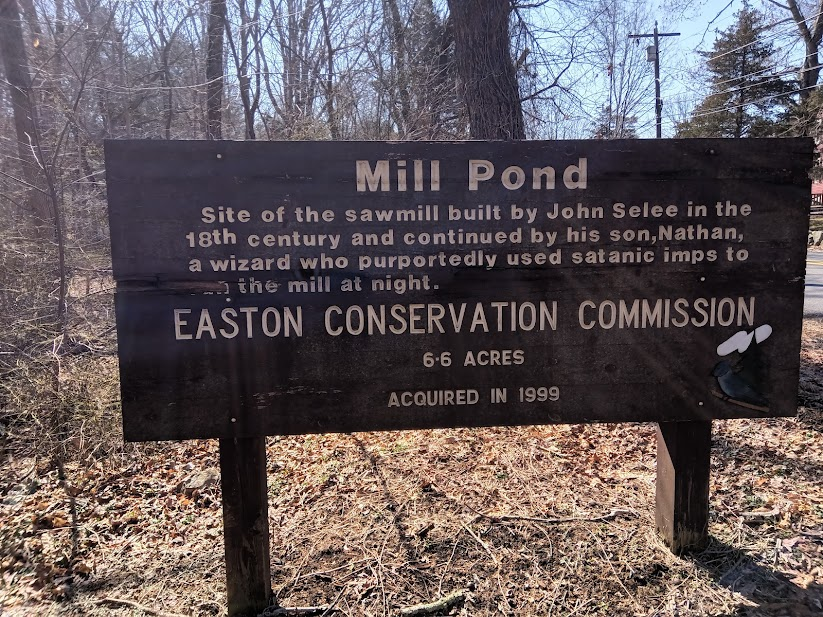|
The small book titled Billy Rock. The Museum’s April 16th Open House was dedicated to Sheep Pasture and the NRT. Interim Curator Arielle Nathanson put together a nice, well-researched exhibit that was well attended. I’ve included some pictures People on the rock face at Sheep Pasture. It is much more overgrown today. The potato cellar at Sheep Pasture. The entrance is currently barred but it wasn’t when I was young. We would dare each other to go all the way in. It was damp and creepy. Adorable photo of two young residents of Sheep Pasture. Olivia & Elise. Sheep Pasture was built during 1893-94. At one time sheep grazed in the meadow, hence the name. The grounds were designed by Frederick Law Olmsted. The mansion was demolished in 1946. Mrs. Elise Ames Parker bequeathed the majority of Sheep Pasture to the Natural Resources Trust.
When the sun caught A bluebird in flight I breathed deep with The relief that is spring Anne Wooster Drury [email protected]
0 Comments
There will be an Open House on Sunday April 16th. More information to come. Thank you to Fr. Anthony V. Szakaly, CSC, and Director of Campus Ministry at Stonehill College for clearing up where the architectural features on Rhododendron Drive pictured in the last newsletter came from. Mr. Ken Percy also came forward with the correct answer. The heavy stone pieces were from the old main gate to the estate that led from Washington Street onto Rhododendron Drive. The wrought iron gates with the Ames seal are located on campus near Boland Hall. Mystery solved. The gates to Stonehouse Hill House when Rhododendron Drive was the main entrance. Now a different type of mystery. Many people enjoy being scared. People like to speculate on the supernatural. Who played with a Ouija board? Told scary stories around a campfire? I remember as a teenager visiting the cemetery behind Unity Church on Halloween night to see if I could hear the "Wailing Woman". I didn't. I admit to enjoying Halloween festivities- as long as they are not gruesome. Last October the Ames Free Library hosted a fundraiser where S.P.I.R.I.T.S. of New England led a ghost hunting tour to look for paranormal activity at Queset House. Easton has a long history of ghost stories. Prior to 1900 when it burned down, the Shepard House on Bay Road, near the intersection with Randall Street, was believed to be haunted. The house was possibly built about the time of the Revolutionary War and served at one time as a tavern; it was a stop on the stagecoach route between Newport and Boston. It was no longer serving as a tavern when the fire broke out in 1900 and the owners at that time, Frederic Griffin, and his wife, fortunately, were not at home. The ghost is said to belong to a one-time occupant who had hanged himself there. This ghost made himself known in various ways and was persistent enough that there was difficulty attracting tenants. Strange things happened in the house but the ghost itself was never seen. Sometimes the family that lived there was frightened by what sounded like “a wagon-load of stones falling from a great height onto the roof”. A chronic problem was tenants finding themselves suddenly awakened in their sleep and lying on the floor of the room. The cords on the corded bedstead had been removed- without cutting or breaking. A joke by a playful ghost? Wheaton Farm is at the center of many ghost stories. One story dates from 1957 when John Webster and his friend Gregory Knowlton saw a female ghost rise from the mist, float across Bay Road, and enter a barn without opening the door. John and his friend were driving on Bay Road from Norton to Easton. They were in an area of older homes, one of which had previously been an inn. It was a dark and foggy night. The two men stopped the car and tried to enter the barn, but it was padlocked. They saw nothing when they looked in the windows. Both men agreed they had seen the same thing- a woman with blond hair, wearing white, with a flickering hurricane lamp in her right hand. Although they drove back and forth on the road for some time but saw nothing else. Afterwards they would return, on foggy nights, hoping to see the woman, but never saw the apparition again. The Wheaton House, Bay Road, Easton, MA. Barn across the street from Wheaton House. Is the ghost still in there? There are many stories about Nathan Selee of the Poquanticut area who was, among other things, apparently clairvoyant. There is an unsettling story about Mr. Selee refusing to tell the fortune of a young woman whose house he was visiting and shortly afterwards telling a companion that if the woman could see her future, she wouldn’t have asked about it. She died the next week. Nathan’s sister, Thankful (Selee) Buck, was supposedly a witch, although if so, perhaps a good witch. She and her daughters were said to recite incantations at midnight and pour water from one pan to another. There were tales she could turn into a black cat. One time, a neighbor of Thankful's admitted to becoming angry at a mischievous black cat and hitting it about the head, only to discover the next day that Thankful was missing an eye. It wasn't the only story that claimed she could change shape and turn into a black cat. Sign on the corner of Mill Street and Rockland. When people heard the mill running at night some attributed it to satanic imps.
People have always enjoyed these types of tales, and although skeptical, I do also. There are many other stories that have stood the test of time: the “Blue Mist” at Stonehill (the ghost of Fred Ames), “Doctor” William Webster’s haunted house in Unionville, and several connected to Queset House. I’m curious if any readers have supernatural experiences of their own connected to Easton. If so, I would love to hear about them. The streetlight catches A black cat on the drive Stepping without sound And undetermined intent Anne Wooster Drury [email protected] |
Author
Anne Wooster Drury Archives
June 2024
Categories |
Easton Historical Society and Museum
PO Box 3
80 Mechanic Street
North Easton, MA 02356
Tel: 508-238-7774
[email protected]







